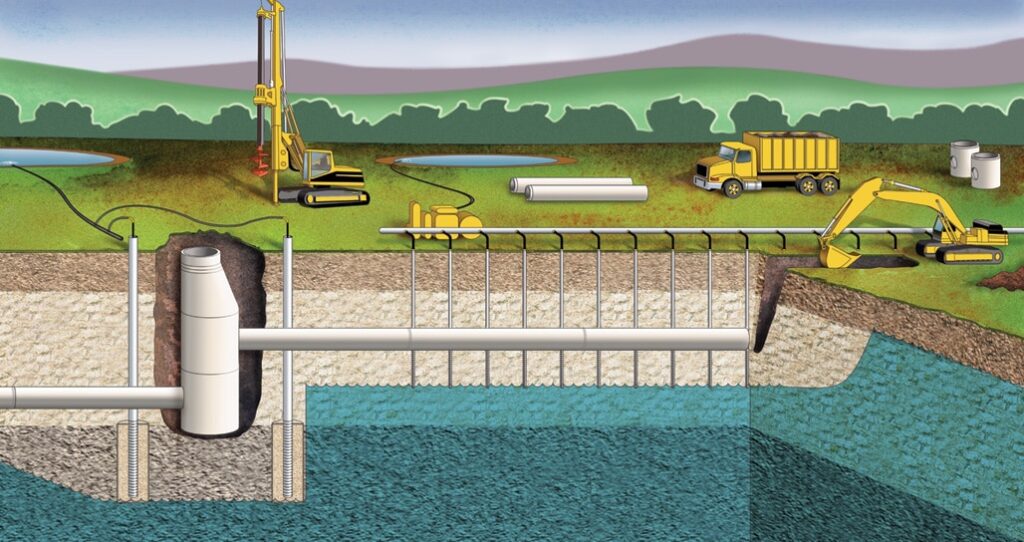Dewatering is the removal of water, where it is drained out by pumping from a particular location. Basically, dewatering provides a dry foundation to work on by reducing the ground water table of the site. Whether you are constructing, running sand, or repairing sewers, dams, buildings, tunnels, or a basement, dewatering can prove very useful.
Choosing the right method for your project is very important. There are four main methods of dewatering — the well point method, eductor wells, open slump pumping, and deep well point method. Let’s take a look at them.

Well Point Method
In the well point method, the groundwater is channelled by the pump through the header pipe before getting discharged. This is a fairly, flexible and cost effective method under a wide variety of soil conditions.
Educator Well
This dewatering method is a lot like the well point system, but instead of a vacuum, high-pressure water is used to draw water into the well points. This method can be an effective in soils that are less permeable.
Open Slump Pumping
In the open slump pumping method, slumps and drains are constructed at one or more points of the excavated pit. These then collect the groundwater. This is one of the most convenient and cost-efficient methods.
Deep Well Point Method
The deep well point method is appropriate for a deep excavation when a large amount of groundwater needs to be removed.
Precautions to Take in Dewatering
- Make sure to conduct the process under special supervision and look out for any signs of instability or soil erosion.
- Do not pump the water directly into slopes.
- Used a wooded buffer if you can.
- Choose an appropriate area to discharge the water, ideally a forest buffer zone.
- Ensure that the channels used for dewatering are stable and covered by vegetation or grass if possible.
- Avoid dewatering during heavy rains.
- When removing water that is contaminated with chemicals, grease or oil, do not discharge it directly. Use an oil-water separator before disposal.
- Make sure you have all the relevant permits and licenses for dewatering before discharging water.
- Check and verify the state of the water table at the location of dewatering. If it is too close to the surface, the plan may not work.
VEMC, a Kirloskar authorised dealer in India, supplies industrial water pumps in Mumbai for different industrial applications. We offer a diverse range of pumping solutions including water pumps. For more information on our products and assistance selecting the right ones for you, please reach out to us at +91 98199 07445. VEMC is ISO 9001:2015 certified and a pioneer in the field of electromechanical engineering products, allied equipment, and services.

